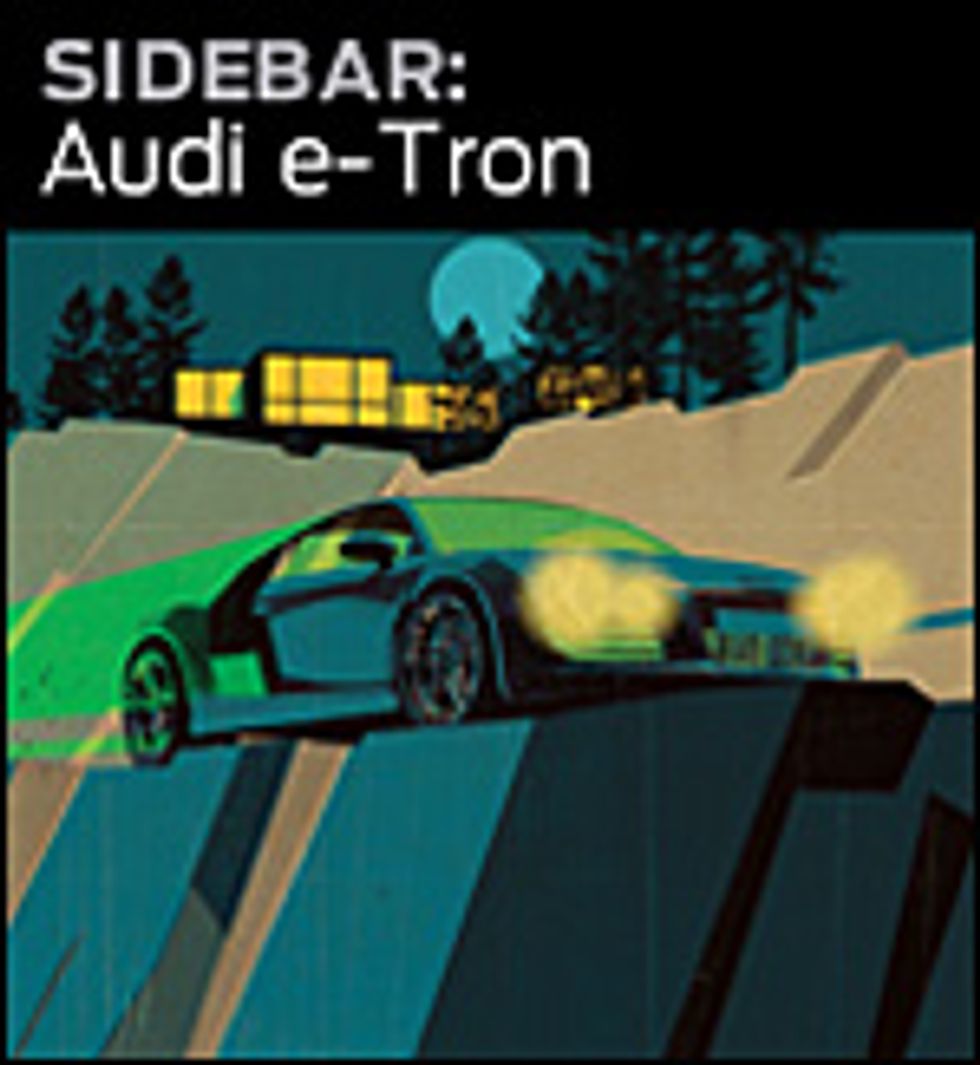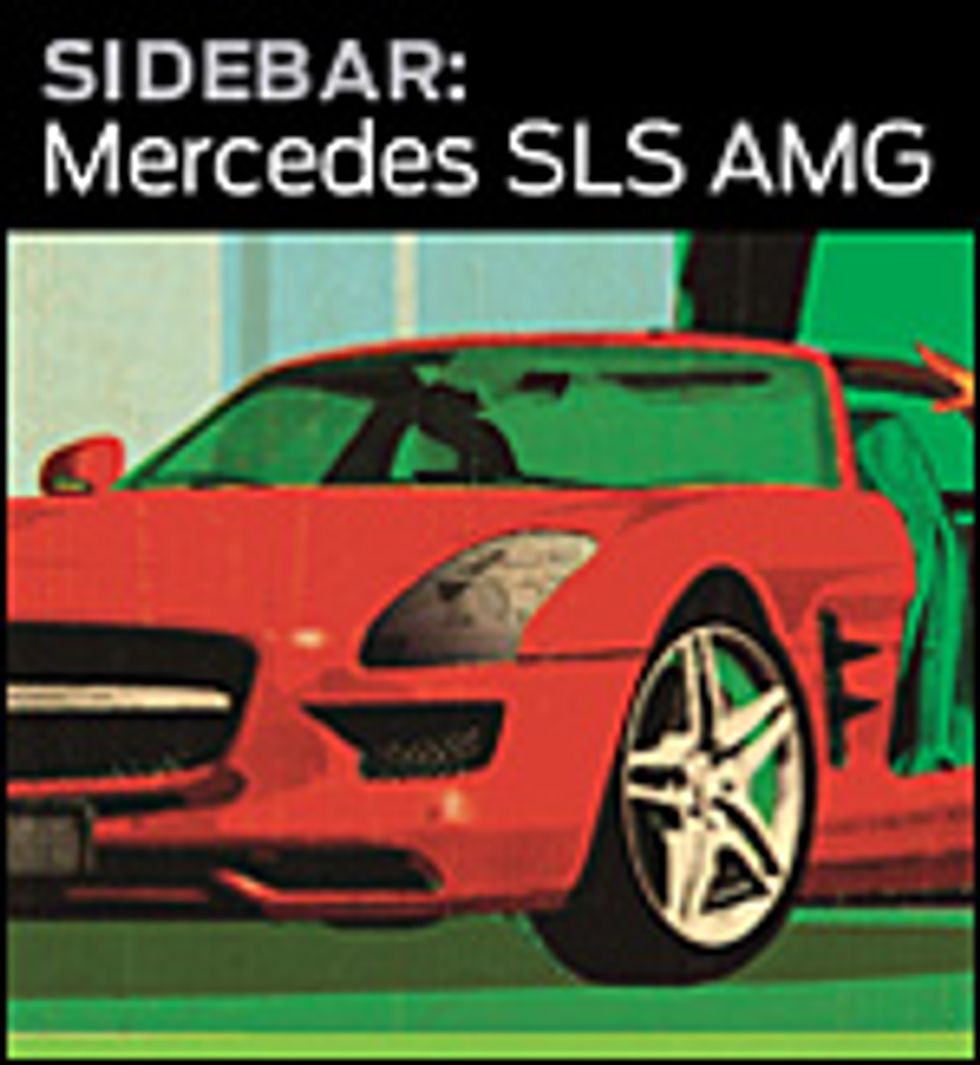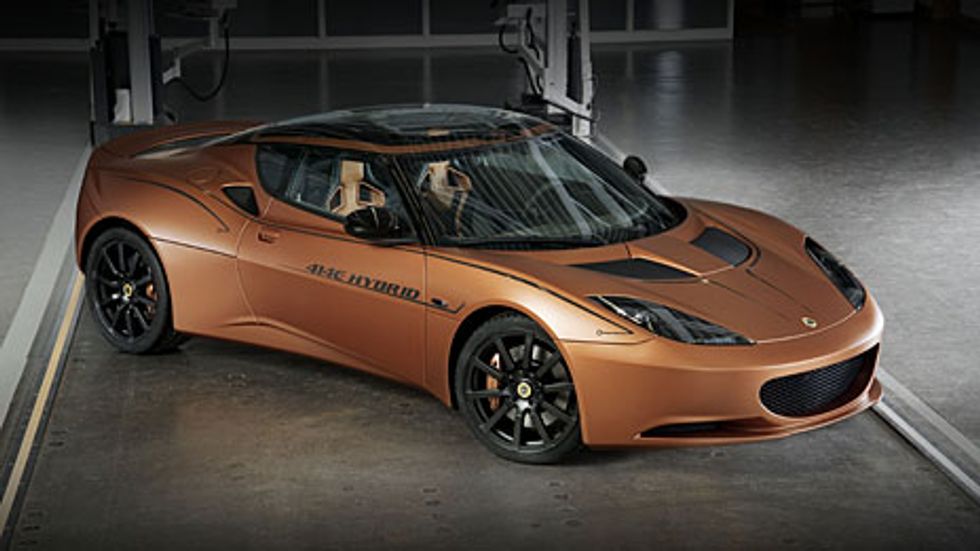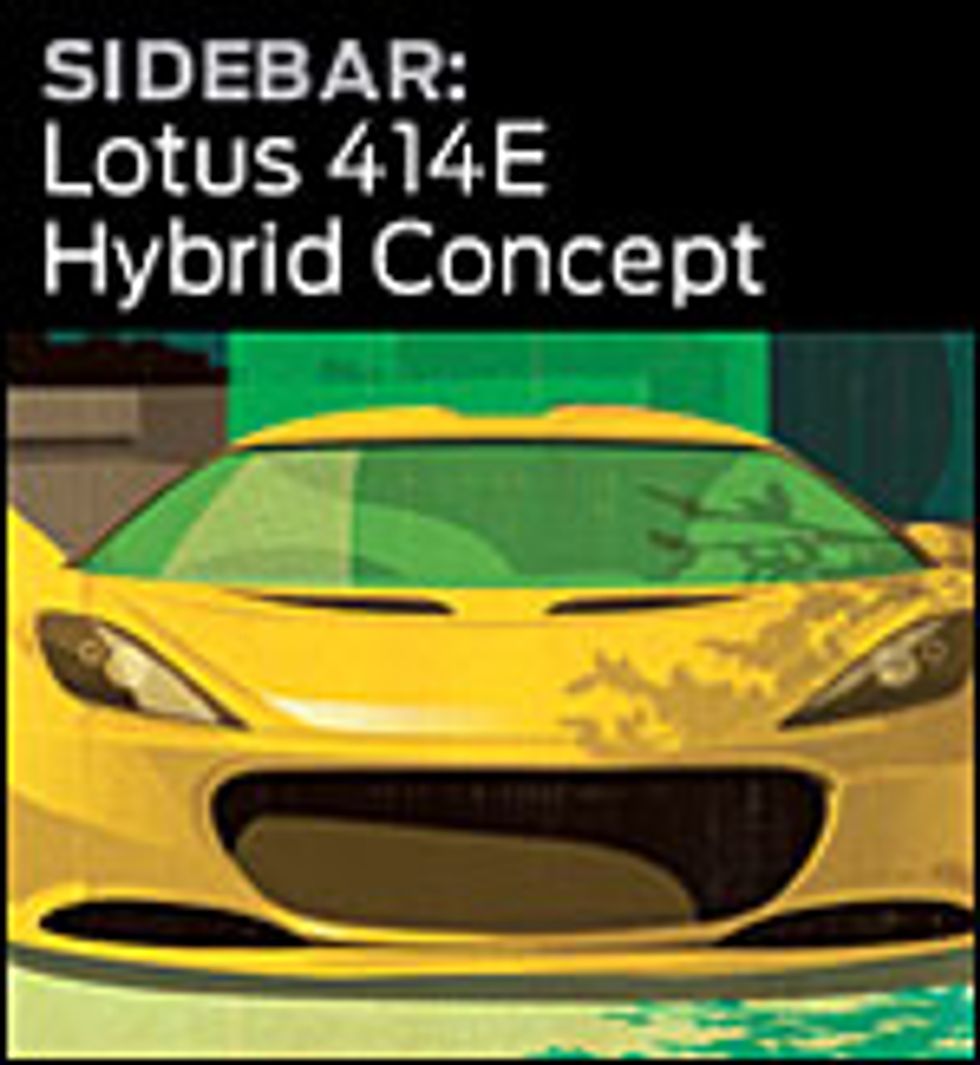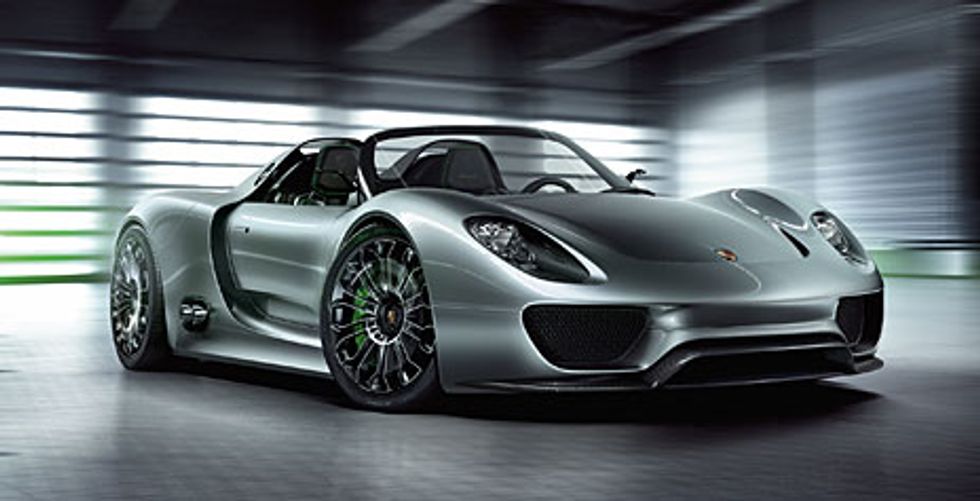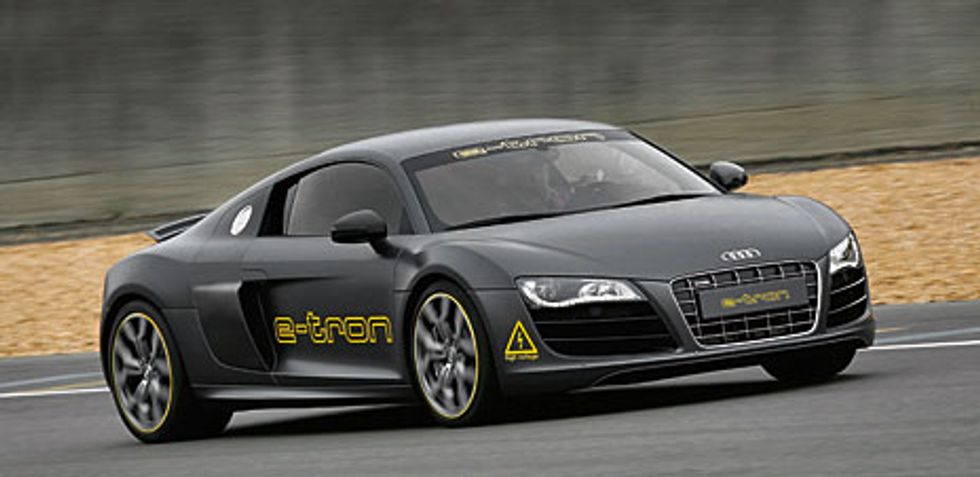The Greening of the Supercar
Ferraris, just like Fords, must now conform to environmental regulations

Mercedes SLS AMG eDrive
Someday soon there will be an affordable and clever electric vehicle that will conquer the world, as the Model T and Volkswagen Beetle did in their day. In the meantime, there’s the Tesla Roadster, a US $109 000, 300-horsepower, two-seat toy for rich, environmentally conscious gadget hounds. Yes, for every Nissan Leaf or Chevy Volt with mainstream pretensions, there’s a battery-powered land rocket that’s way more Bugatti than Beetle.
Makers of automobiles more associated with tearing up the earth than with saving it are suddenly rushing to outdo each other in the automotive industry’s next big battleground: electric and plug-in hybrid cars. Their pitch is the familiar best of all worlds: cars that look hot, go fast, run clean, and consume either no gasoline or very little.
But really now, does a man who buys a six-figure missile on wheels really fret over fuel bills or global warming? Probably not, but carmakers say that affluent buyers increasingly want to make a green statement anyway. In a world where a fuel-sucking V-12 engine seems not just passé but nearly pathological, an electric sports car marks its owner as not just loaded but also progressive, ahead of the curve in both auto technology and fashion. Auto execs, of course, are only too happy to propagate this perception. “In the long run, we’re either going to run out of oil or the price will go up dramatically,” says Frank Van Meel, head of electromobility strategy for Audi. “There’s a need to act right now.”
And yet, it’s not really the warming planet that’s spurring the supercar makers. It’s the heated rhetoric, and the forging of new government regulations. This is quite a change for a niche market that has obsessed over miles per hour while largely ignoring miles per gallon.
Under a controversial European Commission plan, new cars in Europe may be required by 2015 to meet a strict fleetwide average of 130 grams of carbon dioxide per kilometer driven. The United States is expected to adopt similar CO2 standards and has already mandated a 22 percent improvement in fleet average fuel economy, to about 35 miles per gallon (6.7 liters per 100 kilometers) by 2016. Because CO2 emissions are a remorseless function of how much fuel you burn, the EU target means that a gasoline car would need to consume just 5.1 L/100 km, or achieve 46 mpg.
There’s just one problem: No conventional sports car in the world today achieves that kind of fuel economy or squeaky-clean emissions, let alone supercars like the 21.4 L/100 km (11 mpg) Lamborghini Murciélago, among the industry’s worst offenders, belching 480 grams of CO2 per kilometer. Even Lotus’s tiny Elise, soon to be equipped with a shrimpy new 1.6-L four-banger, will emit 155 g/km. That’s less than any current gas-driven sports car but still above the proposed target.
Small-scale sports-car builders such as Ferrari and Porsche have long been excused from meeting the United States’ Corporate Average Fuel Economy rules. Other purveyors of power and luxury have paid fines for missing fuel-consumption standards, with Mercedes shelling out nearly $300 million since 1983—a practice the company has vowed to end by boosting efficiency.
Yet a fast-car fan might ask: In a world steaming with emissions from coal-fired power plants and hundreds of millions of cars, who cares if a Lamborghini guzzles gasoline more greedily than a Citroën? For years, sports-car makers have offered precisely that defense of their guzzling: These exclusive cars sell in such tiny quantities—and are driven so lightly, as weekend toys—that their environmental impact is negligible. Ferrari sells fewer than 10 000 new cars a year around the world, compared to the millions of a GM or Toyota. Ferrari officials say their exotic baubles tend to be driven less than 10 000 km a year on average, about half as much as a typical passenger car. Even so, regulations may limit the free passes and no longer allow major companies to buy indulgences for green sins.
Colin Peachey, Lotus’s chief engineer, frankly allows that political and social forces are driving the industry. “In an ideal world, where burning fuel didn’t damage the planet, there wouldn’t be a case for electric cars. We’d carry on with our V-8s and V-12s and have all the performance and convenience that gas gives you.”
It’s hard to imagine a world in which wealthy car buyers can’t have the cars they want—or one in which carmakers can’t even make the cars they want. Peachey insists that sports-car builders could be effectively legislated out of existence if they don’t hybridize or otherwise green their lineups. “The emissions may be a relative drop in the ocean, yet legislators are saying we’re going to tax you until it hurts, and above a certain emissions level, you just won’t be able to sell the car,” he says.
The writing on the wall is even being translated into Italian: Ferrari has unveiled the 599 HY-KERS hybrid supercar concept, which combines a V-12 engine with an 80-kilowatt (107-horsepower) electric motor—and a 3-kilowatt-hour lithium battery said to be just 2.5 centimeters (1 inch) thick—boosting fuel efficiency to as much as 9.4 L/100 km (25 mpg) and reducing CO2 emissions to 270 g/km.
The car adopts energy-capturing regenerative-braking technology from Ferrari’s KERS (Kinetic Energy Recovery System, used in Formula One race cars), delivering an estimated 1.5 percent gain in fuel efficiency. And as if that weren’t surprising enough to traditionalists, Ferrari chairman Luca di Montezemolo said recently that every car in Ferrari’s lineup will adopt hybrid technology within three to five years. (Note to collectors: Now’s the time to buy up the soon-to-be “classic” gas-burning models.)
Colin Chapman, the engineer, Formula One genius, and founder of Lotus, created the most enduring mantra of sports- and racing-car design: Add lightness. And for today’s performance geniuses, electrified cars pose a tremendous challenge: how to reduce emissions and keep cars fast and razor sharp in handling—as customers demand—even as batteries and electric motors add weight and greatly complicate the pursuit of perfectly balanced (roughly 50-50) weight distribution between front and rear axles.
In a briefing on Ferrari’s environmental issues, technical director Roberto Fedeli expressed confidence that the company would dramatically reduce CO2 emissions while “keeping its soul” and honoring all its performance and fun-to-drive traditions. Yet further gains in engine efficiency won’t be enough, he said. Ferraris and other models will begin to adopt the start-stop functions of hybrids, shutting engines down automatically at stoplights to save fuel.
Ferrari’s performance strategy is to add 1 additional horsepower for every kilogram of mass added to its hybrid cars. In fact, its recently unveiled hybrid concept car actually accelerates more quickly than the standard 599 GTB Fiorano model. Critically, that extra weight must be distributed in a way that doesn’t spoil a car’s handling balance or intrude unduly on passenger and cargo space. Virtually every sports-car maker is designing batteries and hybrid components to fit into a thin “skateboard” entirely under the car’s floor, lowering the vehicle’s center of gravity.
The Tesla Roadster, which is based on the gasoline-powered Lotus Elise, proved that EVs can be fast and fun. But they still don’t outperform comparable gasoline models, especially in handling. That goes for hybrids, too. Much has been made of an electric motor’s ability to deliver its full monty of torque the instant you mash the gas—er, throttle. But for pure EVs, those motors must counteract hundreds of kilograms in batteries, cooling systems, and electronic controls. Take the Elise, a featherweight at less than 910 kilograms (2000 pounds). It gains more than 300 kg (660 pounds) of electric fat in its transformation to the electric Tesla Roadster. And because batteries run out of energy so quickly, especially at higher speeds—a single gallon of gasoline contains 33 kWh of energy, about two-thirds of the energy stored in the entire battery pack of a typical EV—electric cars are generally limited to 200 km/h (125 mph) or less; your mom’s Toyota Camry can go faster.
Fortunately, electric motors themselves are much more efficient than internal combustion engines, losing much less power between the motor and pavement. That’s why an electric vehicle can travel 25 or more kilometers on the energy equivalent—from its batteries—of barely a liter of gas. Of course, those batteries are heavy and can’t store nearly as much energy per cubic centimeter as gasoline does. “If you’re carrying enough battery for a 200-mile range, a lot of the time you’re dragging that battery as deadweight and actually hurting your handling and fuel economy,” says Peachey, the Lotus engineer. So in real life, your choice comes down to limited range or a hybrid drivetrain. Lotus, Porsche, and Ferrari are all going the hybrid route. They can travel, say, 55 km (about 34 miles), on electricity alone. A supplementary engine eliminates the "range anxiety" of a pure EV, allowing smaller, lighter batteries and a less-powerful electric motor.
But electrics hold intriguing advantages as well. Multiple electric motors allow “torque vectoring”—independent control of the drive speed of each individual wheel to improve cornering, stability, and safety—with no need of complex mechanical or hydraulic differentials to divvy the power among the wheels (BMW and other manufacturers are already applying torque vectoring to their gasoline-powered all-wheel-drive cars).
Next up will be electric wheel-hub motors, which will push the performance envelope even farther. Michelin, for example, has been developing its Active Wheel system for over a decade. It puts a motor, a brake, and suspension control in each of a car’s four wheels, eliminating the need for an engine, traditional suspension, gearbox, and transmission. This offers formidable performance: A typical sports car takes roughly 6 seconds to stop from 100 km/h; Michelin’s concept system can do it in 2.8 seconds.
Gearheads may worry that today’s speed merchants will be shackled by environmental demands, just as the original ’60s muscle cars were driven to extinction by the first-ever emissions rules. Yet a modern sports car like the Corvette Z06 somehow manages to combine an impressive 26 mpg with 505 hp and a 198-mph top speed, figures that shame any car of the ’60s. (For those of you in the metric realm, that translates as 9 L/100 km, 377 kW, and 319 km/h.)
An optimist might gather that there’s nothing to fear: Ferraris and Corvettes will still be duking it out, going faster and handling better than ever. This time, though, the drivers will have a new metric to brag about: fuel efficiency.
To buy reprints of the artwork featured in this article, go to https://shop.taviscoburn.com.
About the Author
Lawrence Ulrich explores an unorthodox trend in high-end power cars in “The Greening of the Supercar.” And he came to auto journalism by an unorthodox route: rock music. The native Detroiter worked in the 1980s as a rock musician, playing keyboard as far afield as Europe before becoming a business writer in the early 1990s, then a car writer. He lives in Brooklyn, N.Y., and regularly writes for The New York Times and Automobile.
